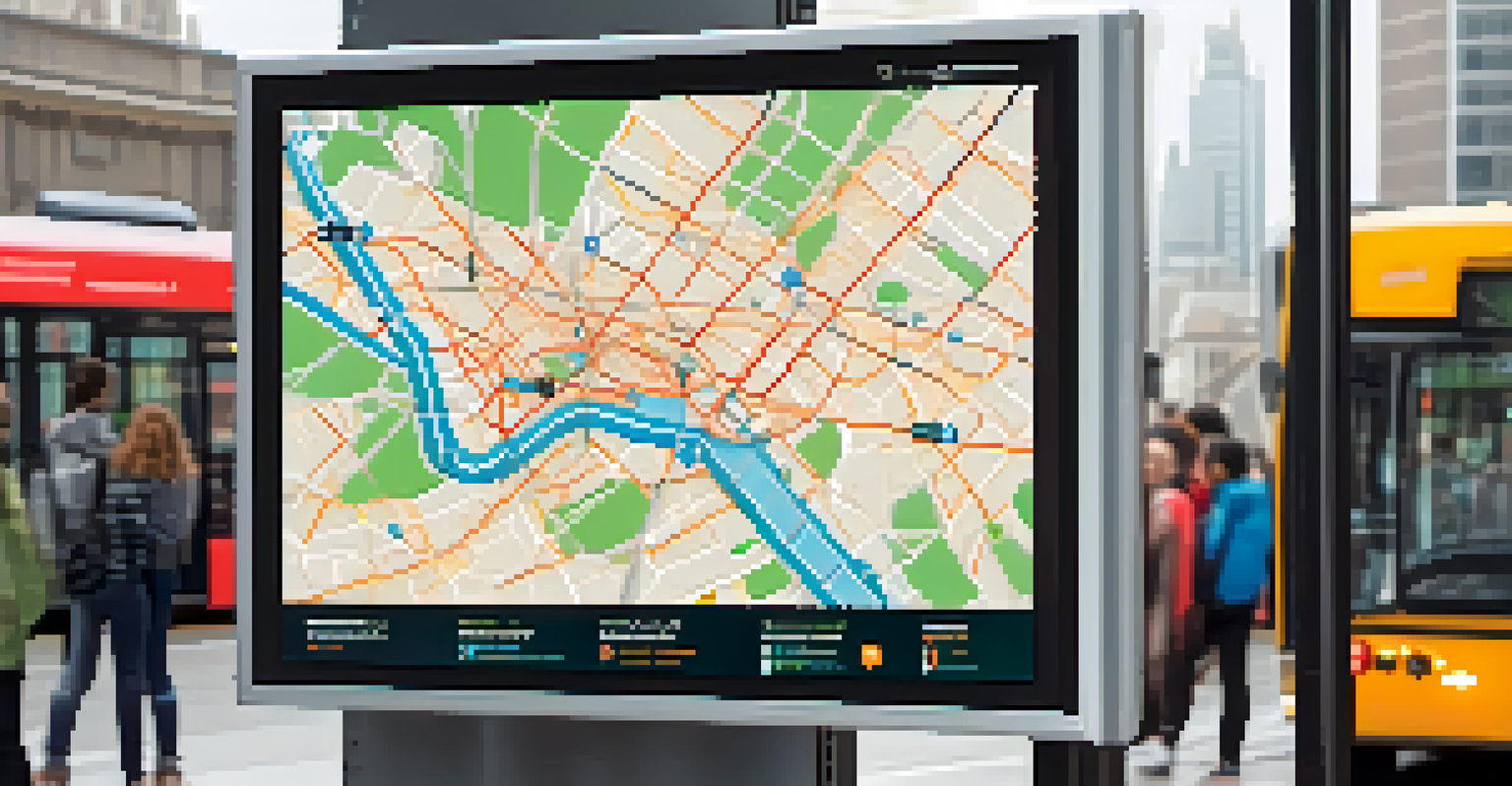Urban Data Analytics: Driving Smart City Innovations

Understanding Urban Data Analytics and Its Importance
Urban data analytics refers to the process of collecting, analyzing, and interpreting data from various sources within a city. This includes everything from traffic patterns and public transport usage to environmental conditions and social behaviors. By harnessing this information, cities can make informed decisions that enhance the quality of life for their residents.
Data is the new oil.
The importance of urban data analytics lies in its ability to provide actionable insights. For instance, city planners can identify congestion zones and optimize traffic flow by analyzing data from sensors and GPS systems. This not only helps in reducing travel time but also minimizes pollution, thereby creating a more sustainable urban environment.
Moreover, urban data analytics empowers local governments to allocate resources more effectively. By understanding where services are most needed, cities can direct funding and attention to areas that will benefit most, ultimately leading to smarter, more efficient urban management.
Key Technologies Driving Urban Data Analytics
Several technologies play a crucial role in urban data analytics, including the Internet of Things (IoT), big data, and cloud computing. IoT devices, such as smart traffic lights and environmental sensors, continuously collect data that can be analyzed for patterns and insights. This real-time data collection is pivotal for making swift decisions in fast-paced urban settings.

Big data refers to the vast volumes of data generated daily in urban environments. This data can be structured or unstructured, and analyzing it requires advanced algorithms and machine learning techniques. For example, analyzing social media sentiment can provide cities with insights into public opinion about local issues, helping officials respond more proactively.
Importance of Urban Data Analytics
Urban data analytics enhances city planning by providing actionable insights to improve quality of life.
Cloud computing complements these technologies by providing a scalable and flexible infrastructure for processing and storing large datasets. This means cities can access powerful analytics tools without the need for extensive on-premise hardware, making it easier for even smaller municipalities to leverage urban data analytics.
Applications of Urban Data Analytics in Smart Cities
Urban data analytics has a wide range of applications in smart city strategies. For example, cities can use data to optimize waste management by analyzing collection patterns and adjusting schedules accordingly. This leads to more efficient operations and can significantly reduce costs associated with waste collection.
Without data, you're just another person with an opinion.
Another application is in public safety, where analytics can help predict crime hotspots by analyzing past incidents and social factors. By deploying resources more strategically, law enforcement can enhance community safety and build trust with residents.
Additionally, urban data analytics can improve public transport systems. By analyzing usage patterns, cities can adjust routes and schedules to better meet the needs of commuters, ultimately leading to increased ridership and reduced congestion on roads.
Challenges in Implementing Urban Data Analytics
While the benefits of urban data analytics are substantial, there are also significant challenges in implementation. One major hurdle is data privacy and security. As cities collect more personal data from residents, ensuring that this information is protected becomes paramount to maintaining public trust.
Another challenge is the integration of various data sources. Cities often have disparate systems that do not communicate effectively with one another. Without proper integration, valuable insights may be lost, and decision-making can be hindered.
Technologies Enabling Data Insights
Key technologies like IoT, big data, and cloud computing are essential for effective urban data analytics.
Moreover, there is a need for skilled professionals who can analyze and interpret complex data sets. As the demand for data-driven decision-making increases, cities must invest in training and development programs to build a workforce capable of leveraging urban data analytics effectively.
Case Studies: Successful Urban Data Analytics Initiatives
Cities around the globe are successfully implementing urban data analytics to drive innovation. For instance, Barcelona has developed a smart city platform that integrates data from various sources, allowing city officials to monitor and manage resources efficiently. This initiative has led to improved energy efficiency and enhanced public services.
In Singapore, the government uses data analytics to manage traffic congestion through its Intelligent Transport System. By analyzing real-time traffic data, the city can provide accurate travel information and make adjustments to traffic signals to improve flow, resulting in smoother commutes for residents.
Similarly, New York City launched its 'Big Data for Cities' initiative, utilizing data analytics to tackle urban challenges. This program has led to innovative solutions in areas such as public health, housing, and emergency response, showcasing the transformative potential of urban data analytics.
The Role of Citizen Engagement in Urban Data Analytics
Citizen engagement is vital in the success of urban data analytics initiatives. When residents are actively involved in data collection and analysis, it fosters transparency and builds trust between communities and local governments. For example, crowdsourcing data through mobile apps can empower residents to report issues like potholes or broken streetlights.
Engaging citizens also ensures that the data collected reflects the needs and concerns of the community. By incorporating public feedback, cities can better understand local challenges and tailor their data analytics efforts accordingly. This participatory approach leads to more relevant insights and solutions.
Challenges in Data Implementation
Data privacy, integration of sources, and the need for skilled professionals pose significant challenges in urban data analytics.
Moreover, educating citizens about the benefits of urban data analytics can increase public support for these initiatives. When residents see the tangible improvements in their daily lives, such as better public services and enhanced safety, they are more likely to engage with and contribute to ongoing data-driven projects.
The Future of Urban Data Analytics in Smart Cities
Looking ahead, the future of urban data analytics appears bright, with advancements in technology paving the way for even smarter cities. As artificial intelligence (AI) continues to evolve, it will play an increasingly important role in processing and analyzing vast amounts of urban data. This will allow for more accurate predictions and proactive decision-making.
Additionally, the integration of 5G technology will enable faster data transmission, facilitating real-time analytics. With cities becoming more connected, the potential for innovative applications will expand, from enhanced transportation systems to improved emergency response protocols.

Ultimately, the continued development of urban data analytics will be driven by collaboration among governments, private sector partners, and residents. By working together, stakeholders can harness the full potential of data to create sustainable, efficient, and livable urban environments for future generations.